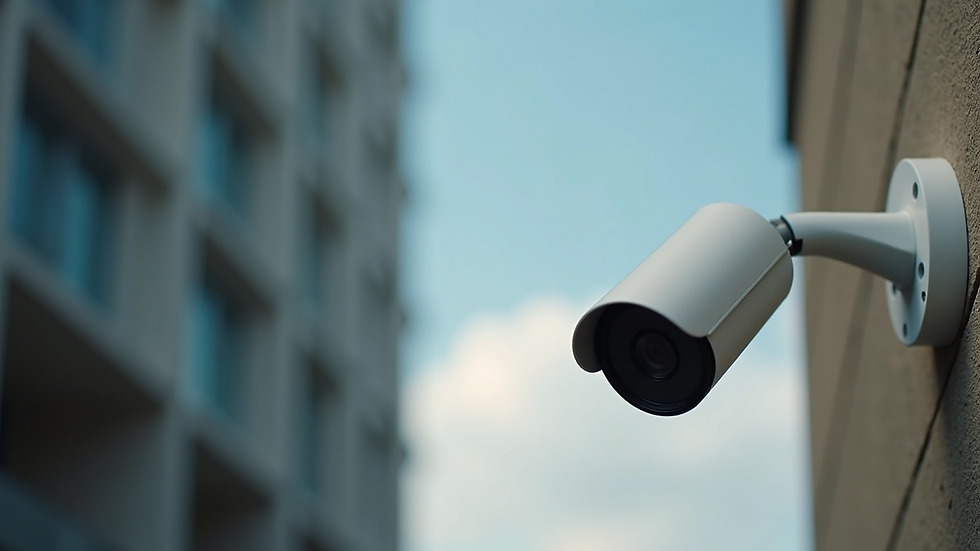How Smart Home Technology is Changing Our Daily Lives
- Ravi Amirtham
- Sep 18
- 3 min read
Smart home technology is transforming the way we live, making everyday tasks easier, safer, and more efficient. From controlling lights with a voice command to monitoring home security remotely, these innovations are reshaping our daily routines. This article explores how smart home devices impact various aspects of life, the benefits they bring, and whether investing in them is worthwhile.
The Rise of Smart Home Technology
Smart home technology refers to devices and systems that connect to the internet and can be controlled remotely or automated. These include smart thermostats, lighting, security cameras, voice assistants, and more. The convenience of managing these devices through smartphones or voice commands has made them increasingly popular.
For example, a smart thermostat can learn your schedule and adjust the temperature automatically, saving energy and reducing bills. Smart lighting systems allow you to set moods or turn off lights from anywhere, enhancing comfort and security.

The integration of these devices creates a connected environment that adapts to your lifestyle. This connectivity not only improves comfort but also helps in energy management and home security.
How Smart Home Devices Improve Daily Life
Smart home technology impacts daily life in several practical ways:
Energy Efficiency: Smart thermostats and lighting reduce unnecessary energy use by adapting to your habits.
Security: Smart cameras and doorbells provide real-time alerts and remote monitoring, increasing home safety.
Convenience: Voice assistants like Alexa or Google Home allow hands-free control of devices.
Health and Wellness: Smart air purifiers and sleep trackers help maintain a healthier living environment.
Entertainment: Smart speakers and TVs offer seamless access to music, movies, and more.
For instance, you can program your coffee maker to start brewing as soon as your morning alarm goes off, or have your lights turn on gradually to wake you gently.

These features combine to create a more comfortable, efficient, and enjoyable home experience.
Is Home Automation Worth the Money?
Many people wonder if the cost of smart home devices justifies the benefits. The answer depends on your lifestyle, priorities, and the specific devices you choose.
Cost Considerations
Initial investment can be high, especially for comprehensive systems.
Some devices require professional installation.
Ongoing costs may include subscription fees for cloud services or advanced features.
Benefits That Offset Costs
Energy savings can reduce utility bills over time.
Enhanced security may lower insurance premiums.
Increased home value due to modern technology.
Time saved on routine tasks and improved convenience.
Practical Recommendations
Start small with essential devices like smart bulbs or plugs.
Choose products compatible with your existing devices.
Look for systems that offer easy expansion.
Consider home automation offers to find affordable packages.
Ultimately, the value of home automation depends on how much you use and benefit from the technology. For many, the convenience and peace of mind make it a worthwhile investment.

Integrating Smart Home Technology Seamlessly
To get the most out of smart home technology, integration and compatibility are key. Here are some tips to ensure a smooth setup:
Choose a Central Hub: Devices that work with a single platform (like Google Home or Amazon Alexa) simplify control.
Check Compatibility: Ensure new devices work with your existing smart home ecosystem.
Secure Your Network: Use strong passwords and update firmware regularly to protect your devices.
Automate Routines: Set schedules and triggers to automate daily tasks, such as turning off lights when you leave home.
Use Voice Commands: Learn voice commands to control multiple devices hands-free.
By following these steps, you can create a smart home environment that feels natural and enhances your lifestyle without complexity.
The Future of Smart Homes
Smart home technology continues to evolve rapidly. Future developments may include:
Improved AI: Smarter assistants that anticipate needs and provide personalized support.
Greater Interoperability: More devices working seamlessly across different brands and platforms.
Enhanced Security: Advanced encryption and biometric authentication.
Sustainability Features: Devices that optimize energy use based on environmental conditions.
Health Monitoring: Integration with wearable devices to track wellness and alert for emergencies.
As these innovations become more accessible, smart homes will become even more integral to daily life, offering new levels of comfort, safety, and efficiency.
Smart home technology is no longer a luxury but a practical tool that enhances everyday living. Whether you want to save energy, improve security, or simply enjoy greater convenience, embracing smart devices can make a significant difference. By understanding the benefits and planning your setup carefully, you can create a connected home that truly works for you.



Comments